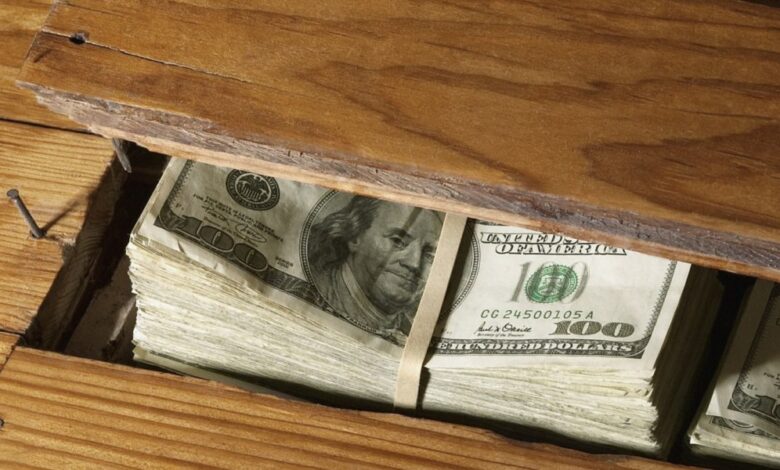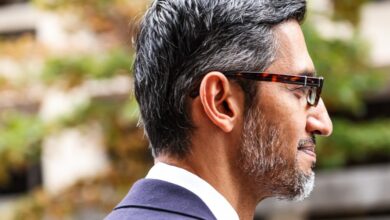Should you keep all your money in cash?


Shortly after the WHO declared an end to the COVID-19 pandemic in May 2023, the Federal Reserve embarked on a series of rate hikes to tamp down on inflation. Their goal was to make it more expensive for consumers to borrow and more lucrative for them to save. Over the course of 15 months, the federal funds rate went from near-zero to more than 5%.
Cash and cash equivalents, such as savings accounts, money market accounts (MMAs), and certificates of deposits (CDs), previously offered measly interest rates. Now, they provide annual percentage yields (APYs) well above 4%.
Fed policymakers have indicated that they anticipate multiple rate cuts this year. If the federal funds rate drops, interest rates on deposit accounts will follow, leaving some wondering where to put their money next.
Cash may be king now, but it isn’t in the long run
While it may be tempting to stash your money in cash, cash doesn’t outpace inflation in the long term.
“When we look at cash equivalents, it’s very difficult to beat inflation long term by parking lots of capital in those types of accounts,” says Ashley Weeks, Vice President and Wealth Strategist at TD Wealth.
Plus, if you keep your money in cash rather than stocks or bonds over the long run, you could miss out on substantial returns.
According to an analysis from Schwab, between 1970 and 2020, stocks, bonds, and cash offered an average annualized average return of 10.7%, 7.0%, and 4.6%, respectively. When accounting for taxes and inflation, the returns for all asset classes were worse, but cash was the only asset that offered a negative return.
Figure out your investment horizon
Instead of pouring your money into deposit accounts, it’s best to tailor your saving and investing strategy to your investment horizon and financial goals, regardless of what the Fed does with interest rates.
First off, consider your time horizon and liquidity needs, such as when you will need your money and how accessible it should be.
“Match your savings and investment accounts to the time horizon of your goals,” says Preston Cherry, a Certified Financial Planner (CFP) and founder of Concurrent Financial Planning.
For example, most people should put their emergency fund in a savings account, and their retirement savings in stock and bond funds.
Why? With an emergency fund, you’ll want to be able to access your cash in a pinch and protect your principal. However, if you’re saving for retirement, you probably won’t tap that cash for years or even decades and, therefore, can take on more risk.
SPONSORED PARTNER
SoFi Checking & Savings
| APY | 4.60% |
| Minimum Balance Required to Earn APY | $0 |
| Minimum Opening Deposit | $0 |
| Monthly Maintenance Fee | None |
Typically, the further your goal is in the future, the more risk you can take on. Since risk has an inverse relationship with reward, the greater the risk, the greater the potential reward.
In other words, consider reserving riskier and potentially higher-yielding investments for longer investment horizons and using safer yet lower-yielding investments for shorter ones.
Weeks breaks down investment time horizons into three categories:
- Short-term: Less than two years
- Medium-term: Two to 10 years
- Long-term: More than 10 years
Short-term savings goals: less than 2 years
Before you start investing for longer-term goals, it’s important to have an emergency fund with around three to six months’ worth of expenses. Keeping these in a checking, savings, or MMA is best because these accounts are liquid.
Many of these accounts are safe (if you opt for an FDIC or National Credit Union Administration (NCUA)-insured bank or credit union) and may even offer interest:
Online banks typically offer higher rates, so if you’re willing to open a new account or shop around for rates, you can score even better returns. These examples are currently offering rates above 4.50% on their high-yield savings accounts:
Medium-term investment goals: 2 to 10 years
If you want a slightly higher yield and don’t intend to touch your money for a while, you might consider CDs and fixed-income investments, such as Treasurys, which have both benefited from the Fed’s rate hikes.
A CD is a type of deposit account covered by FDIC and NCUA insurance that offers a fixed interest rate in exchange for tying up your money for a few months or even years.
Unlike a savings account, however, a CD is not liquid, so if you need your money before the CD’s term is up, you’ll have to pay an early withdrawal penalty, which is usually worth a few months’ interest. A CD can be a good option if you’re saving up for a down payment on a house or another financial goal set a few months or years from now.
These banks and credit unions are currently offering rates above 5% on CDs and share certificates:
Consider: Treasury securities
While CDs are currently offering stellar yields, they are taxed like ordinary income. For greater returns you may consider Treasury securities, which provide special tax benefits.
“Recently, Treasurys have been a nice haven for that interim goal period. [Treasurys] are the safest investment that there is—it’s backed by the full faith and credit of the U.S. government,” says Weeks. “Money earned on a U.S. Treasury is exempt from state income tax for folks who live in states that levy an income tax.”
At the time of publication, six-month and 10-year Treasury securities provide yields above 5% and 4%, respectively and durations range from four weeks to 30 years. By choosing an investment with a longer time period, you can also reduce reinvestment risk which occurs when you have to reinvest your money at a lower interest rate.
For example, if you invest in a two-year Treasury note offering a 4% yield and the Fed reduces rates, you’ll have to reinvest your money at a lower rate when it matures.
Stacy Johnson, senior portfolio manager at TIAA, recommends investing in a bond fund that tracks the United States Aggregate Bond Index, which covers the performance of various U.S. fixed-income investments.
“The value appreciates as interest rates fall, which enables a better return than you’re going to get in cash,” says Johnson.
Long-term investment goals: 10 years or more
Over the long run, it’s hard to beat the potential gains of the stock market. If you’re decades away from retirement, you may want to start investing in the stock market ASAP. Even delaying by a few years can make a big difference in your potential earnings.
Rather than investing in individual stocks, you might opt for a low-cost index fund.
Index funds are like a basket of stocks that are meant to replicate the performance of the entire stock market. Investing in one means you’re investing in hundreds or thousands of companies, and you get automatic diversification because your returns don’t depend on the performance of a single stock. Index funds also tend to have lower fees because they try to match the performance of the market, not beat it.
Stocks are more volatile, which means their prices fluctuate much more than bonds or cash. But don’t let that deter you; the average annual return of the S&P 500 since 1926 is more than 10%, but it’s critical to note that past returns don’t predict future returns.
Of course, when saving for retirement, it’s important to include fixed-income investments in your portfolio too. As you get closer to retirement, you’ll want to allocate a greater percentage of your portfolio toward conservative investments to minimize volatility.
The takeaway
Putting your money in a savings account is an easy way to earn a solid return. But unless you plan on using that money in the near future, it’s best to consider longer-term investment options that often offer better returns.
To determine which investment is best for you, pinpoint your time horizon, risk tolerance, and liquidity needs. Cash equivalents are usually best for short- and medium-term financial goals, while bonds and stocks are better for medium- and long-term ones.
Source link




